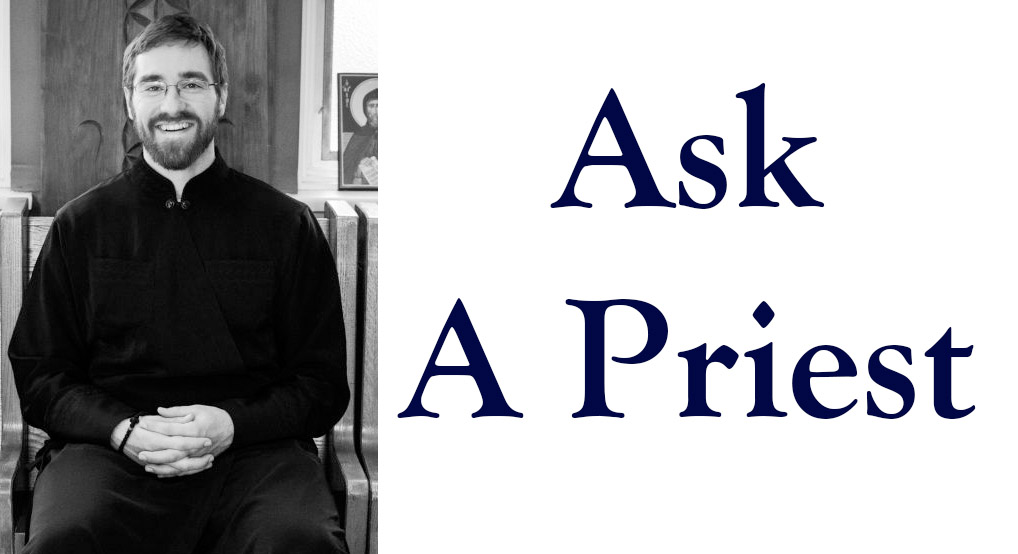Question answered by: Father Michael Bombak
That’s a great question, and it’s made even better when we consider some of the different practices within Roman Catholic Masses and Ukrainian Catholic Divine Liturgies.
Some of the confusion arises from a difference in liturgical “body language.” We are integrated beings, body and soul, and so whatever we “say” in prayer we say with all of ourselves, including our bodies. This is why standing, kneeling, and sitting (when appropriate) are all important postures to consider when we worship together. The Roman Catholic posture of adoration (adoring God’s glory and majesty) is kneeling. This is contrasted with the Eastern Catholic posture of standing. In other words, although Roman Catholics and Ukrainian Catholics are both adoring the Lord they are saying the same thing in different ways with their bodies. Kneeling within the Eastern Christian tradition is actually a penitential stance and is demonstrated not with standing on your knees on a “kneeler” as is often seen, but through a profound bow (metania) from the waist, where one’s head is touched to the ground in humility and repentance. So, the shorter answer to your question is that the most appropriate posture for the Divine Liturgy is standing, whether weekday or festal.
In our pew books of our parishes, you might notice there are some suggestions in brackets on when to stand and when to kneel. It is important to remember that these are not rubrics (liturgical instructions) and are not actually part of the official text of the liturgy itself. There might be a local custom in your parish where everyone kneels at certain times, etc. What is important here is good liturgical order, so if this is the case in your parish, it is best to go along with the established norm set by your pastor. If you are interested or want to pursue it further I would suggest simply chatting with him privately as to the rationale and expectation for the “body language” during the corporate worship of your particular parish.

